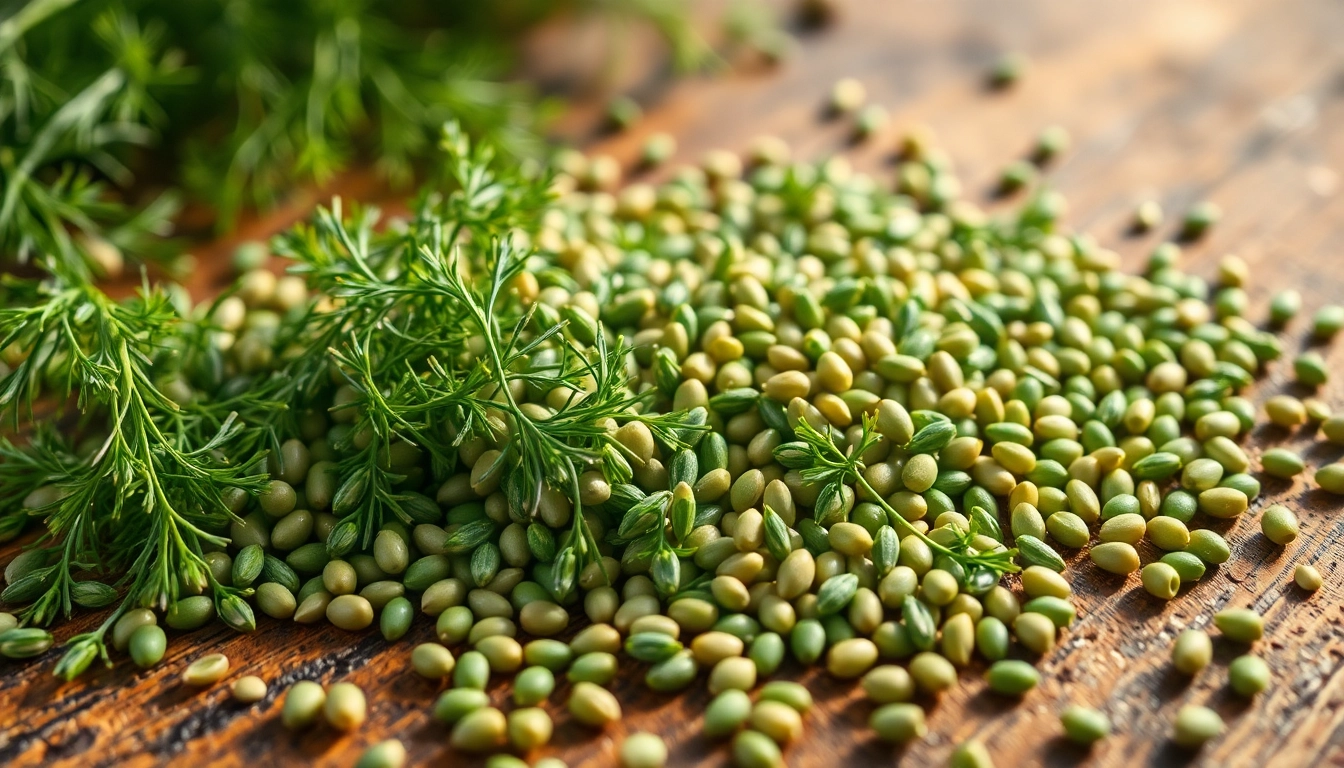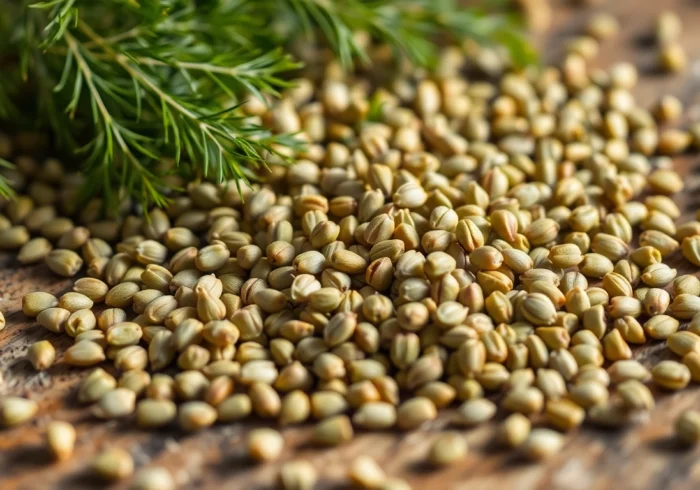Introduction to Dill Seeds: Unlocking Their Potential in Culinary and Health Applications
In the vast world of spices and herbs, dill seeds hold a special place for their distinctive aroma, flavor profile, and health benefits. Often overshadowed by their leafy counterpart, fresh dill, the seeds themselves are an underappreciated ingredient that elevates a variety of dishes across diverse cuisines. Whether used in pickling, seasoning, or medicinal preparations, dill seeds offer a unique combination of culinary versatility and nutritional value. For food manufacturers, exporters, and culinary enthusiasts, understanding how to select, incorporate, and maximize the benefits of dill seeds is essential for delivering superior flavor and health benefits to end consumers. Dill Seeds are a prime example of nature’s spice that, when used correctly, can transform ordinary dishes into culinary masterpieces.
Understanding Dill Seeds: Benefits and Uses
Antioxidant and Medicinal Properties of Dill Seeds
Dill seeds are rich in essential oils, flavonoids, and antioxidants, which contribute to their acclaimed medicinal properties. Their antioxidant activity helps neutralize harmful free radicals, potentially reducing oxidative stress and lowering the risk of chronic diseases. Traditional medicine systems have long utilized dill seeds for their digestive, anti-inflammatory, and antimicrobial effects. Scientific studies reinforce these claims, highlighting dill seed extracts’ effectiveness in managing digestive disorders, reducing inflammation, and supporting immune health.
In particular, dill seeds are known to contain compounds such as carvone, limonene, and flavonoids like quercetin, which provide both antioxidative and antimicrobial benefits. For example, incorporating dill seeds into daily diet routines can aid in gastrointestinal health by alleviating indigestion, bloating, and flatulence. Their anti-inflammatory properties also make them suitable for addressing joint pain and inflammation in various traditional herbal practices.
Culinary Applications Across Cuisines
Dill seeds are a staple in many world cuisines, notably Indian, Middle Eastern, European, and Scandinavian recipes. Their subtle anise-like fragrance lends a distinctive flavor to pickles, soups, stews, bread, and spice blends. In Indian cuisine, dill seeds are used in chutneys, pickles, and spice powders, enhancing the aroma and taste. Scandinavian traditions incorporate dill seeds in gravlax, fish dishes, and bread, creating a harmonious flavor profile.
In Middle Eastern cooking, these seeds are essential ingredients in spice mixes like za’atar and are used for flavoring kebabs and rice dishes. Their versatility extends to baking, where they add an aromatic touch to bread and savory pastries. Exploring these diverse culinary applications highlights dill seeds’ adaptability and potential for creating authentic and innovative dishes worldwide.
Differences Between Dill Seeds and Other Spices
While dill seeds are often confused with similar aromatic seeds such as fennel, cumin, or coriander, they possess a unique flavor profile. Dill seeds have a more delicate, sweet, and slightly bitter taste with a distinct anise or licorice aroma. In contrast, fennel seeds are sweeter, cumin provides earthiness, and coriander offers citrus notes. Recognizing these differences is crucial for chefs and manufacturers to achieve the intended flavor in recipes.
Moreover, dill seeds contain specific bioactive compounds absent in other spices, which contribute to their medicinal properties. Proper identification and quality assurance ensure that consumers and food processors derive maximum benefits from genuine dill seed products.
Choosing the Best Dill Seeds: Quality Indicators
Key Factors in Selecting Fresh Dill Seeds
For optimal flavor and health benefits, selecting high-quality, fresh dill seeds is paramount. Indicators of good quality include a uniform size, vibrant color, and a strong aroma. Dull, discolored, or moldy seeds suggest poor storage or age, which can diminish flavor and potency. Fresh dill seeds exhibit a characteristic aromatic scent similar to licorice, and their surface should be free from extraneous debris or damage.
To ensure freshness, sourcing dill seeds from reputed suppliers, such as certified organic producers, is advisable. Look for seeds that are hygienically processed, free from contaminants, and stored in moisture-proof packaging to maintain their quality over time.
Packaging and Storage Tips for Freshness
Proper packaging plays a vital role in preserving dill seeds’ aroma, flavor, and medicinal properties. Airtight, opaque containers or vacuum-sealed packs prevent exposure to light, air, and humidity, which can cause oxidation and spoilage. For commercial use, eco-friendly and tamper-proof packaging options are recommended to meet safety standards and consumer preferences.
Storage in a cool, dry, and dark environment further extends shelf life. Avoid storing dill seeds near strong odors or heat sources, as this may affect their distinct aroma and flavor. Regular quality checks and inventory management help maintain product freshness for both retail and export purposes.
Certified and Organic Dill Seed Suppliers
Choosing certified organic dill seeds offers assurance of purity, absence of synthetic chemicals, and adherence to safety standards. Top-tier manufacturers like Spice Nest provide certified organic dill seeds that meet international quality benchmarks. These suppliers undergo rigorous inspections and comply with food safety norms such as ISO, HACCP, and Organic Certifications, ensuring trusted quality for both domestic and global markets.
Incorporating Dill Seeds in Cooking and Preserving
Popular Dishes Enhanced with Dill Seeds
Incorporating dill seeds into recipes elevates their complexity and aroma. Classic dishes like pickles, especially dill pickles, benefit greatly from the subtle spicy notes. Indian curries, especially vegetarian and lentil-based dishes, are enriched by the inclusion of dill seeds, adding depth and digestibility.
For baking, dill seeds provide an aromatic touch to bread, muffins, and savory pastries. They also enhance salad dressings, marinades, and spice blends, creating a multi-layered flavor experience. Experimenting with doses—usually ½ teaspoon to 1 teaspoon per dish—facilitates balancing their aromatic contribution without overpowering the main ingredients.
Making Homegrown Dill Seed Infused Products
Home infusion is a popular method to preserve and extend the flavor of dill seeds. Creating homemade herbal teas, infused oils, or spice blends with dill seeds offers fresh and potent flavor options. For instance, infusing olive oil with dill seeds creates a fragrant dressing suitable for salads and seafood dishes.
Additionally, making pickled vegetables with dill seeds captures their flavor and medicinal qualities, turning ordinary vegetables into long-lasting, healthful preserves. Proper sterilization and storage ensure that DIY products retain their aroma and potency over months.
Using Dill Seeds in Pickling and Spice Blends
Pickling is arguably the most common culinary use of dill seeds. Their antimicrobial properties help in fermentation, while their aromatic qualities add distinctiveness to pickles. Typically, 1-2 teaspoons of dill seeds are added to pickle brines for a balanced flavor.
Furthermore, dill seeds are essential in various spice blends such as Scandinavian “dill salt” or Indian “panch phoron” mixtures. Their inclusion not only improves aroma but also enhances health benefits, supporting digestion and immunity.
Maximizing Flavor: Grinding and Seasoning Tips
When and How to Grind Dill Seeds
Grinding dill seeds just before use maximizes their volatile oils and aroma. Use a mortar and pestle or spice grinder to achieve a fine powder, which melds well into spice blends and marinades. For cooking, whole seeds are preferable during simmering to release flavor slowly, whereas ground dill seeds are suitable for dry spice mixes and garnishes.
It is recommended to grind in small batches to preserve freshness and aroma, as volatile oils tend to evaporate quickly once exposed to air. Storage of ground dill should be in airtight containers away from heat and light to prevent loss of potency.
Best Pairings with Other Spices
Dill seeds pair exceptionally well with aromatics like garlic, onion, and mustard seeds. Combining dill with caraway, coriander, or cumin yields complex flavor profiles suitable for pickles, bread, and savory dishes. For seafood, pairing dill seeds with lemon and pepper creates a fresh, zesty marinade.
In herb blends, dill complements parsley, chives, and tarragon, forming a fragrant herbaceous mixture ideal for salads and dressings.
Creating Custom Spice Mixes with Dill Seeds
For food processors and culinary innovators, creating custom spice blends incorporating dill seeds can differentiate products in the marketplace. Consider blending dill seeds with caraway, black pepper, and fennel seeds for a versatile seasoning. These mixes are suitable for roasting vegetables, marinating meats, or flavoring baked goods.
Properly proportioned, these mixes can be tailored for specific cuisines or dietary needs, offering both flavor and health benefits.
Measuring and Packaging Dill Seeds for Commercial Use
Accurate Dosage for Recipes and Food Industry
Precise measurement of dill seeds ensures consistent flavor and compliance with food safety standards. For industrial applications, standardized weight measures such as grams or ounces facilitate quality control. Incorporating digital scales and calibrated dosing equipment enhances accuracy during formulation and packaging.
Adhering to recommended dosages—generally 1-2% of the total recipe weight—optimizes flavor without overpowering the dish or product.
Packaging Options for Export and Retail
Packaging plays a pivotal role in maintaining dill seeds’ aroma, flavor, and medicinal qualities. Suitable options include vacuum-sealed packs, laminated foil pouches, or plastic jars with airtight lids. Packaging should be labeled with clear product information, certifications, expiry dates, and storage instructions, aligning with international standards.
For export, compliance with regulations such as FSSAI, USDA Organic, or ISO standards is essential. Offering a variety of packaging sizes—from small retail packs (200g, 500g) to bulk industrial containers (5kg, 25kg)—addresses diverse market needs.
Compliance with Food Safety Standards
Ensuring compliance with food safety regulations and certifications (e.g., ISO 22000, HACCP) is critical for international trade. Regular quality audits, traceability, and hygienic processing practices help maintain product integrity. Certification from recognized authorities boosts consumer confidence and opens doors to global markets.
Partnering with reputable suppliers who adhere to these standards ensures that dill seeds meet the stringent requirements of discerning buyers worldwide.



